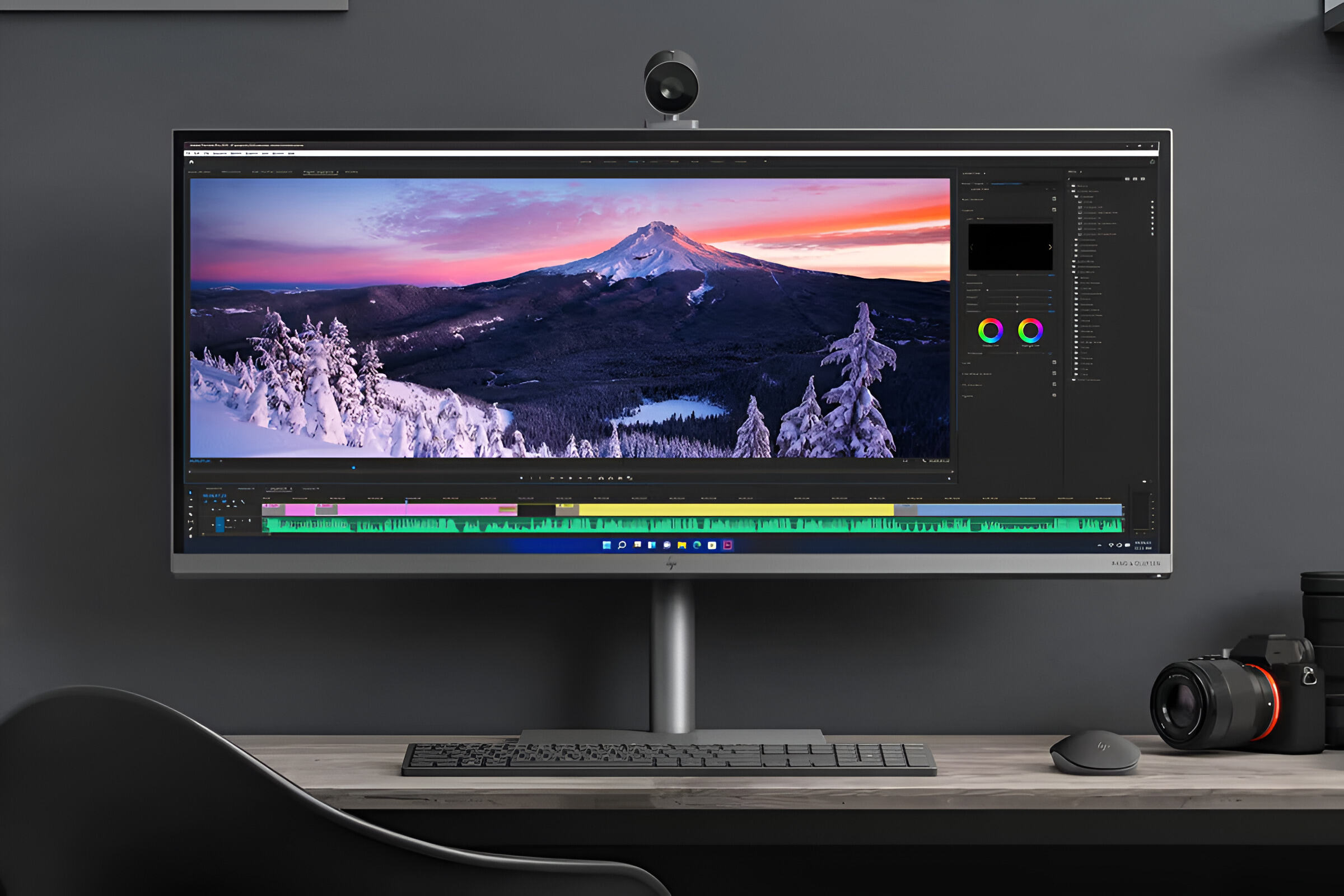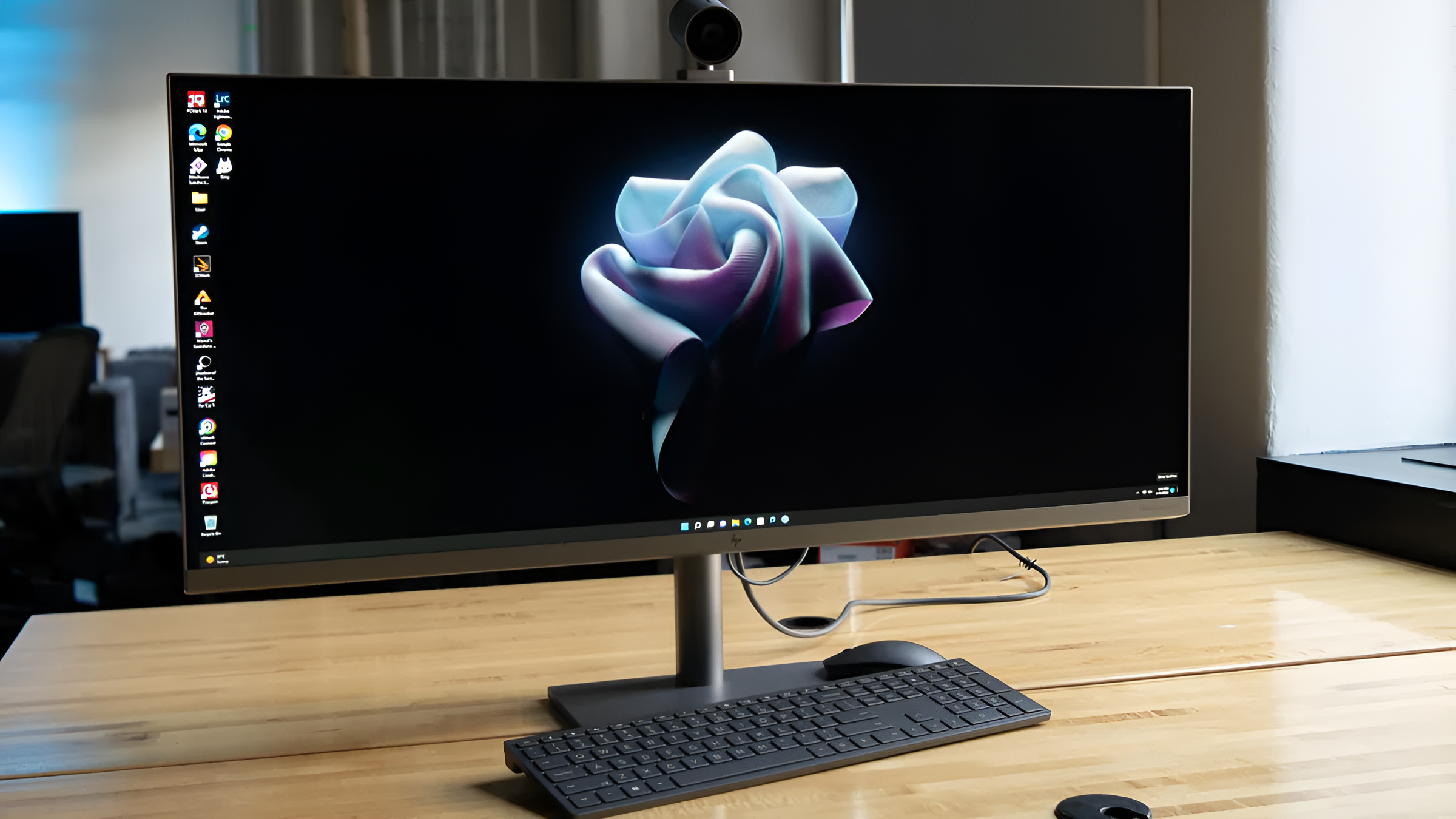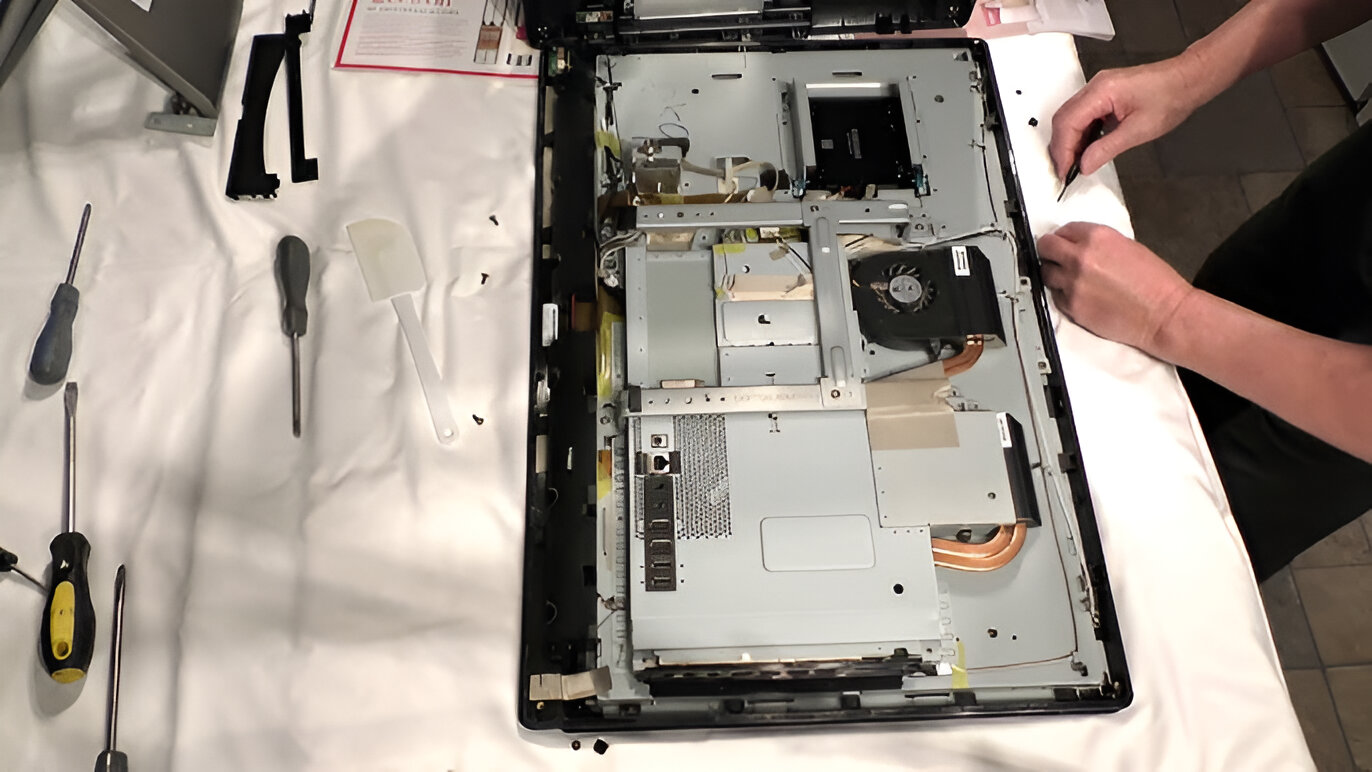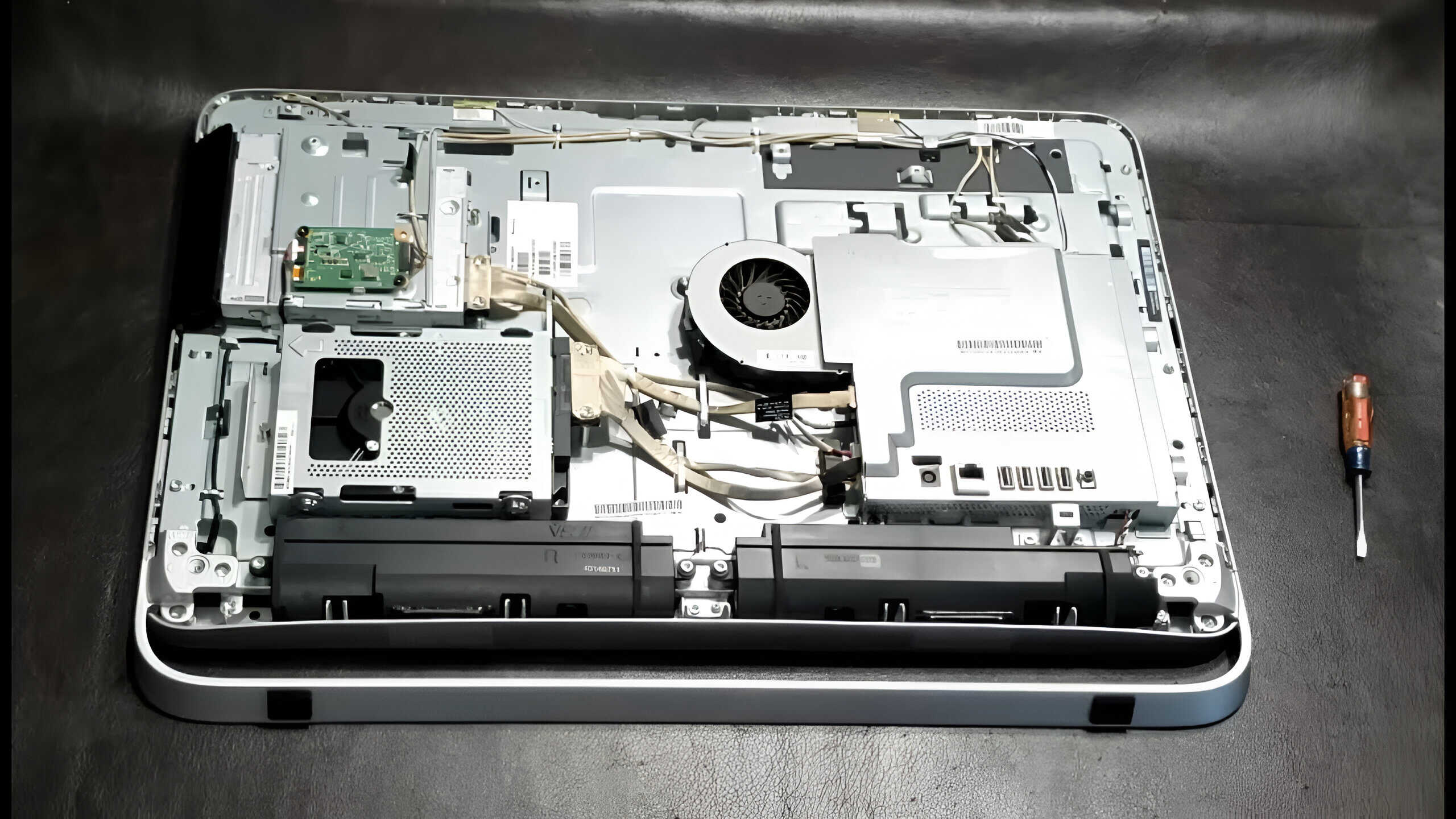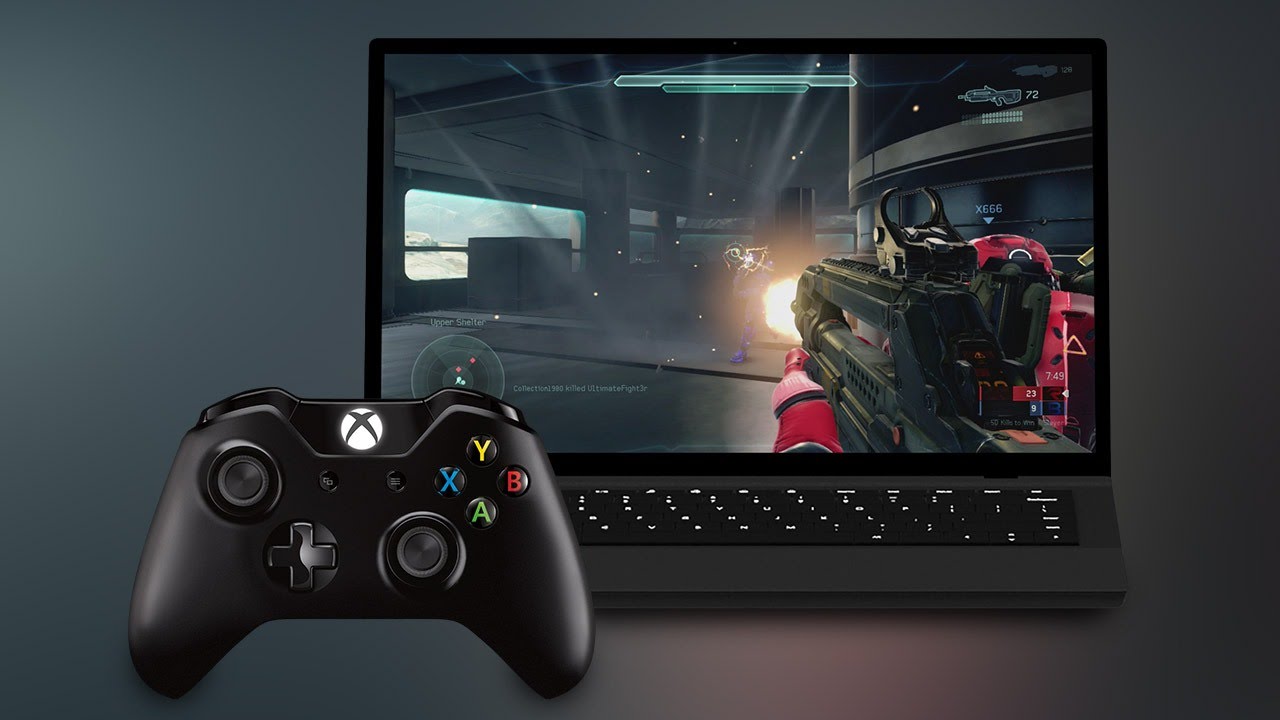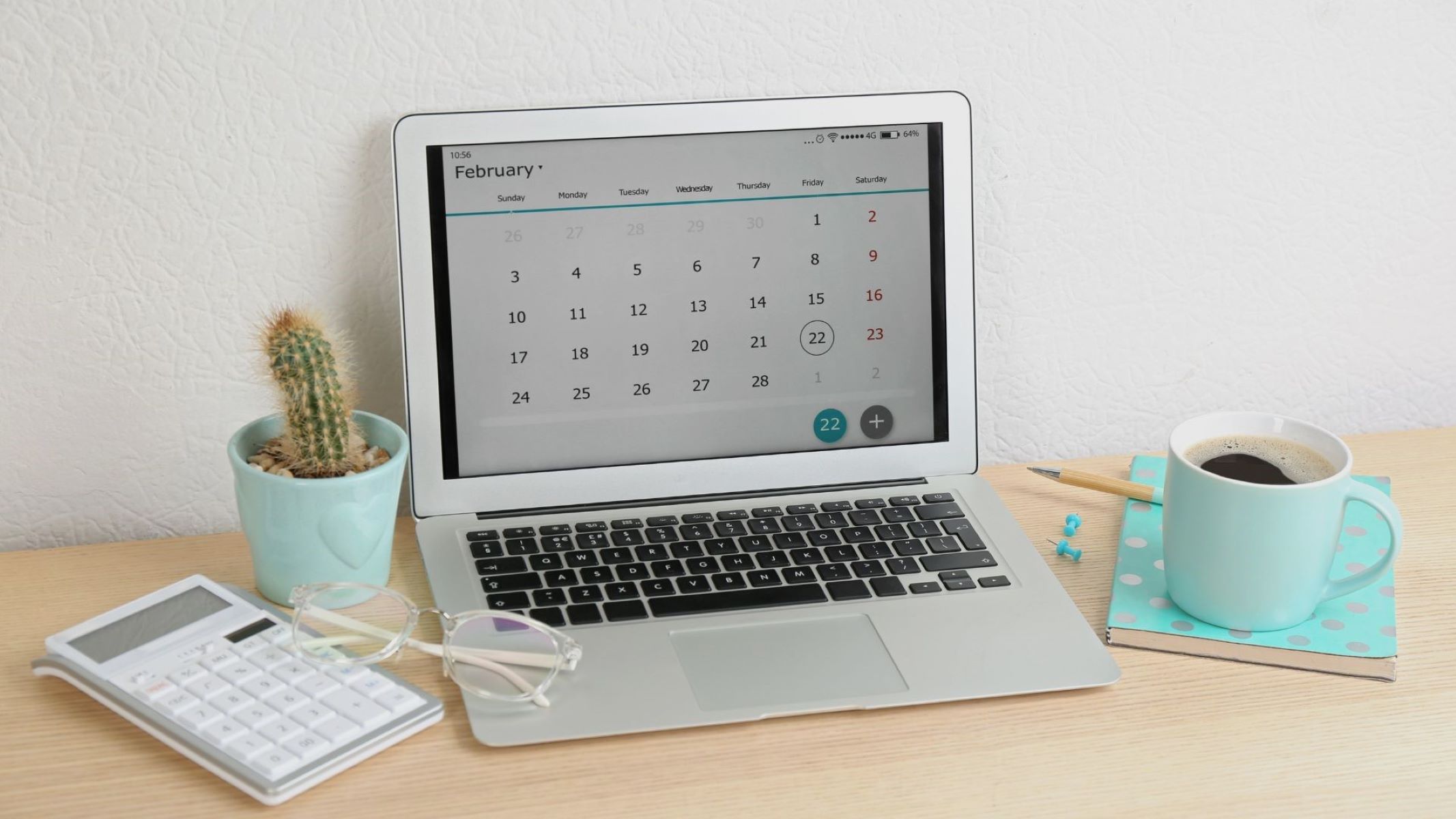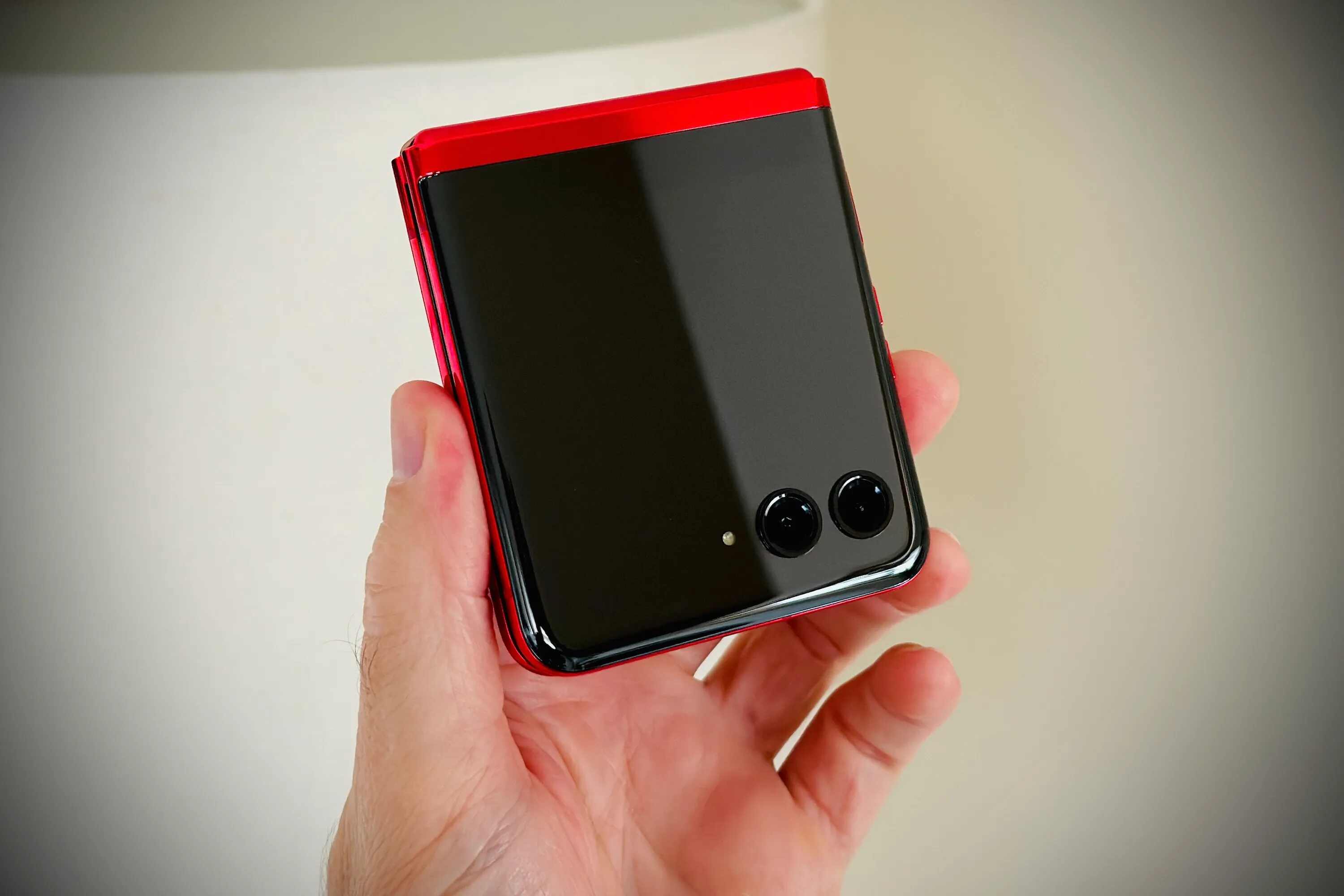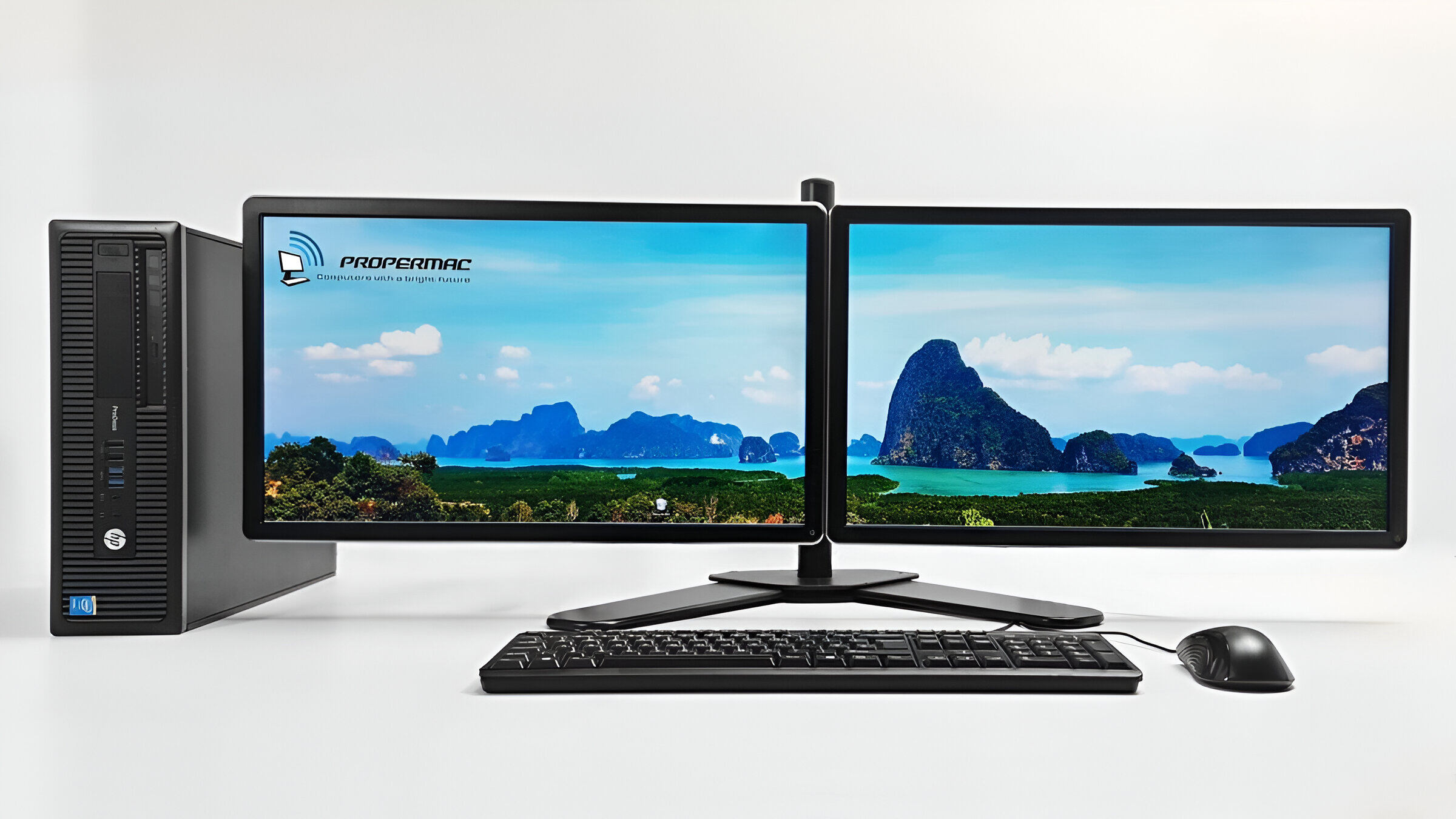Introduction
Welcome to the world of All-In-One PCs! In this digital age, computers have become an essential part of our everyday lives. From work to entertainment, we rely on these powerful machines to accomplish a wide range of tasks. While traditional desktop computers have their advantages, All-In-One PCs have emerged as a popular alternative that combines functionality, style, and convenience in a single package.
But what exactly is an All-In-One PC? In simple terms, it is a computer system that integrates all the essential components, including the CPU, monitor, and speakers, into a single unit. Gone are the bulky towers and tangled wires – All-In-One PCs offer a sleek and streamlined design that saves space and enhances the overall aesthetic of your workspace.
One of the primary advantages of All-In-One PCs is their compact size. By eliminating the need for a separate tower and monitor, they take up significantly less space on your desk, making them ideal for small offices or rooms with limited real estate. They are also more portable compared to traditional desktop computers, allowing you to easily move them from one location to another, if needed.
Another key advantage of All-In-One PCs is their user-friendly design. With everything integrated into a single unit, setting up and connecting your computer becomes a breeze. Gone are the days of deciphering complex wiring diagrams – simply plug in the power cord and you’re ready to go. This simplicity extends to the user interface as well, with most All-In-One PCs featuring a touchscreen display that offers intuitive navigation and enhances your overall computing experience.
Furthermore, All-In-One PCs provide a clutter-free workspace, eliminating tangled cables and messy desks. The compact design prevents cable congestion and ensures that your workstation remains clean and organized. This not only enhances the visual appeal of your workspace but also improves productivity by reducing distractions.
As with any technology, All-In-One PCs do have their drawbacks. One of the main concerns is the limited upgradability. Unlike traditional desktop computers where you can easily swap out components, All-In-One PCs often have integrated parts that cannot be upgraded or replaced. This means that you may be stuck with the same hardware configuration for the life of the machine, which can be a disadvantage if you are looking for flexibility or require high-performance capabilities.
In the following sections, we will delve deeper into the advantages and disadvantages of All-In-One PCs, explore their key features, discuss popular brands and models, and provide tips for choosing the right All-In-One PC for your needs. So, let’s embark on this journey and unravel the world of All-In-One PCs!
What is an All-In-One PC?
An All-In-One PC, also known as AIO, is a computer system that integrates all the essential components into a single unit. Unlike traditional desktop computers, which consist of a separate tower, monitor, and multiple cables, All-In-One PCs combine the CPU, monitor, and speakers into a compact design. This streamlined approach not only saves space but also provides a more aesthetically pleasing and clutter-free workspace.
The key feature of an All-In-One PC is its integration of hardware components. The CPU, or central processing unit, which is responsible for executing instructions and processing data, is built into the monitor housing. This eliminates the need for a separate tower or CPU unit, reducing the footprint of the computer system. Additionally, the monitor of an All-In-One PC typically features a touchscreen display, allowing for a more interactive and user-friendly experience.
Another important component of an All-In-One PC is the display. The monitor of an AIO is typically larger than that of a laptop but smaller than a traditional desktop monitor. This provides a balance between screen real estate and portability, making them suitable for both work and entertainment purposes. The display quality of All-In-One PCs can vary, with some models offering high-resolution screens and vibrant colors for an immersive viewing experience.
In terms of performance, All-In-One PCs are generally equipped with processors that offer a balance between power efficiency and speed. While they may not be as powerful as high-end desktop computers designed for gaming or resource-intensive tasks, they can handle everyday computing tasks, such as web browsing, document editing, and multimedia playback, with ease.
All-In-One PCs also come with built-in speakers, eliminating the need for external speakers or headphones. While the quality of the speakers may vary depending on the model, they offer a convenient solution for multimedia consumption, video calls, and casual audio playback.
Connectivity options are another important aspect of All-In-One PCs. They typically include USB ports, audio jacks, HDMI or DisplayPort outputs, and an Ethernet port for wired internet connections. Some models also feature wireless connectivity options, such as Wi-Fi and Bluetooth, allowing for seamless integration with other devices.
Overall, All-In-One PCs offer a compact and streamlined computing solution that combines the essential components into a single unit. They are ideal for those who value space-saving designs, minimal setup, and a clutter-free workspace. Whether you are a student, professional, or casual user, All-In-One PCs provide a balance between performance, aesthetics, and convenience.
Advantages of All-In-One PCs
All-In-One PCs offer several advantages over traditional desktop computers and laptops. Here are some of the key advantages:
- Space-saving design: The integration of components in an All-In-One PC eliminates the need for a separate tower and cables, resulting in a more compact and space-saving design. This is particularly beneficial for those with limited desk space or who prefer a clean and minimalist workstation.
- Ease of setup: Setting up an All-In-One PC is a breeze. With all the components built into the monitor housing, you simply need to plug in the power cord and turn on the computer. There are no complicated wiring or cable management tasks, allowing you to start using your PC quickly and hassle-free.
- User-friendly interface: Many All-In-One PCs feature touchscreen displays, providing a more intuitive and interactive user experience. Whether you’re browsing the web, editing documents, or playing games, the touchscreen allows for effortless navigation and control.
- Enhanced aesthetics: All-In-One PCs are known for their sleek and modern design. With no visible wires and a seamless integration of components, they offer a clean and visually appealing appearance. This makes them a stylish addition to any workspace or home environment.
- Portability: Compared to traditional desktop computers, All-In-One PCs are more portable. They are lighter and easier to move around, making them a convenient choice for those who need to relocate their computer system frequently or have a flexible workspace setup.
- Reduced cable clutter: All-In-One PCs minimize cable clutter on your desk. With the components integrated into the monitor, there are fewer cables to connect and manage, leading to a cleaner and more organized workspace. This not only improves the aesthetics but also reduces the chances of tangled cables and accidental disconnections.
- Built-in speakers: Most All-In-One PCs come with built-in speakers, eliminating the need for external speakers or headphones. While the audio quality may vary, this built-in audio solution is convenient for multimedia consumption, video calls, and casual audio playback.
- Energy-efficient: All-In-One PCs are designed to be energy-efficient, consuming less power compared to traditional desktop computers. They often feature low-power processors and components, contributing to reduced energy consumption and lower electricity bills.
These advantages make All-In-One PCs a popular choice for various users, including students, professionals, and home users. Whether you need a computer for work, entertainment, or both, All-In-One PCs offer a compact and versatile solution that combines performance, style, and convenience.
Disadvantages of All-In-One PCs
While All-In-One PCs offer many advantages, it’s essential to consider their potential drawbacks before making a purchase decision. Here are some of the main disadvantages of All-In-One PCs:
- Limited upgradability: Unlike traditional desktop computers that allow for easy component upgrades, All-In-One PCs often have integrated components that cannot be easily replaced or upgraded. This means that you may be limited in terms of future hardware enhancements, such as upgrading the CPU, adding more RAM, or increasing storage capacity.
- Higher cost: All-In-One PCs tend to be more expensive than traditional desktop computers with similar specifications. The integration of components and the sleek design contribute to higher manufacturing costs, which are passed on to the consumer. Additionally, due to the limited upgradability, you may need to invest in a higher-end model upfront to ensure that it meets your long-term requirements.
- Display limitations: While the display of an All-In-One PC can be a significant advantage, it also has its limitations. The monitor size of an All-In-One PC is typically smaller than that of a traditional desktop computer. Furthermore, the lack of a dual monitor option may limit multitasking capabilities or certain professional use cases that require multiple displays.
- Heat management: All-In-One PCs often have limited space for cooling, which can lead to higher internal temperatures. This can result in reduced performance, system slowdowns, or potential hardware damage in extreme cases. It’s essential to monitor the temperature of an All-In-One PC and ensure proper ventilation for optimal performance and longevity.
- Less customization: All-In-One PCs prioritize sleek design and compactness over customization options. Compared to traditional desktop computers, there are fewer choices when it comes to selecting individual components, such as the CPU, graphics card, or storage. This lack of customization may not be suitable for users with specific performance requirements or those who prefer to build their own computer systems.
- Reliance on manufacturer support: With All-In-One PCs, there is often a greater reliance on manufacturer support for repairs, upgrades, or troubleshooting. In some cases, it may be challenging to find compatible replacement parts or DIY repair options. This can potentially lead to longer downtimes or higher maintenance costs compared to traditional desktop computers.
Despite these disadvantages, All-In-One PCs remain a popular choice for many users due to their sleek design, space-saving benefits, and user-friendly interface. It’s important to consider your specific needs and priorities when weighing the advantages and disadvantages of an All-In-One PC.
Key Features to Look for in an All-In-One PC
When considering an All-In-One PC, it’s important to assess its key features to ensure that it meets your specific requirements and provides the best user experience. Here are some essential features to look for:
- Processor: The processor is the brain of a computer system, responsible for executing instructions and handling tasks. Look for a powerful and efficient processor that meets your computing needs, whether it’s for basic tasks like web browsing and document editing, or more resource-intensive applications like video editing or gaming.
- Display: The display is an integral aspect of an All-In-One PC. Consider the size, resolution, and quality of the display. A larger display with a higher resolution will provide a more immersive viewing experience, whether you’re working on projects, watching videos, or engaging in multimedia activities.
- Storage: Evaluate the storage options of the All-In-One PC. Look for sufficient storage capacity to accommodate your files, programs, and media content. Consider whether you prefer a solid-state drive (SSD) for fast boot times and quick file access or a traditional hard disk drive (HDD) for larger storage capacity at a lower cost.
- RAM: Random Access Memory (RAM) impacts the system’s multitasking capabilities and overall performance. Ensure that the All-In-One PC has enough RAM to handle your tasks smoothly. The recommended minimum is 8GB, but for more demanding applications, consider opting for 16GB or higher.
- Graphics: If you plan to use the All-In-One PC for gaming, graphic design, or any graphics-intensive tasks, consider a model with dedicated graphics. This will provide better performance and an enhanced visual experience. Integrated graphics, on the other hand, are sufficient for most everyday tasks.
- Connectivity: Check the available connectivity options on the All-In-One PC. Look for USB ports (both Type-A and Type-C), HDMI or DisplayPort outputs for external display connections, audio jacks, and an Ethernet port for wired internet access. Wireless connectivity options like Wi-Fi and Bluetooth are also essential for seamless integration with other devices.
- Operating System: Consider the operating system (OS) that comes pre-installed on the All-In-One PC. Windows, macOS, and Linux are the most common options. Choose an OS that you are familiar with or that supports the software applications you rely on for work or personal use.
- Additional Features: Look for any additional features or functionality that may enhance your user experience. This could include a built-in webcam for video conferencing, a card reader for easy file transfers, or a DVD drive for physical media usage. Consider your specific needs and preferences when evaluating these additional features.
By considering these key features, you’ll be able to select an All-In-One PC that meets your computing needs and provides a seamless and enjoyable user experience. Take the time to compare different models and specifications to ensure that you make an informed decision.
Popular Brands and Models of All-In-One PCs
When it comes to All-In-One PCs, several popular brands offer a range of models to suit different needs and preferences. Here are some renowned brands and their popular All-In-One PC models:
- Apple iMac: Known for its sleek design and powerful performance, the Apple iMac is a popular choice among Mac users. It features a stunning Retina display, powerful processors, and excellent graphics capabilities. The iMac is favored by creatives and professionals for its seamless integration with macOS and the Apple ecosystem.
- HP Envy: HP’s Envy series of All-In-One PCs combine style and performance. The Envy models offer a range of screen sizes and resolutions, catering to different user needs. With powerful processing capabilities, ample storage options, and sleek designs, the HP Envy is a reliable choice for both work and entertainment.
- Dell XPS: Dell’s XPS line is renowned for its premium build quality and impressive performance. The XPS All-In-One PCs feature stunning displays with vibrant colors, powerful processors, and ample RAM and storage options. The XPS models provide a smooth and seamless user experience, making them ideal for both productivity and multimedia tasks.
- Lenovo IdeaCentre: Lenovo’s IdeaCentre series offers a wide range of All-In-One PCs to suit various budgets and requirements. From entry-level models for everyday computing to high-performance options for gaming and professional use, the IdeaCentre lineup provides a good balance between affordability and functionality.
- Acer Aspire: Acer’s Aspire All-In-One PCs offer a cost-effective solution without compromising on performance. The Aspire models feature decent displays, reliable processing power, and generous storage options. These PCs are suitable for users who need a reliable workhorse for everyday tasks and light multimedia usage.
- ASUS Zen AiO: ASUS’ Zen AiO series combines elegant design with excellent performance. These All-In-One PCs feature high-resolution displays, powerful processors, and ample storage capacity. With their stylish aesthetics and robust performance, the Zen AiO models are favored by users who prioritize both functionality and aesthetics.
- Microsoft Surface Studio: The Microsoft Surface Studio stands out for its unique design and versatility. It offers a large touch-sensitive display that can be adjusted to different angles, making it suitable for digital artists and creative professionals. With its powerful hardware and seamless integration with Microsoft software, the Surface Studio provides an excellent all-around experience.
These brands and models are just a few examples of the wide range of All-In-One PCs available in the market. When choosing an All-In-One PC, consider factors such as performance, display quality, budget, and specific requirements to find the best fit for your computing needs.
How to Choose the Right All-In-One PC for You
Choosing the right All-In-One PC can be a daunting task, given the multitude of options available in the market. Here are some factors to consider to help you make an informed decision:
- Usage: Determine how you plan to use the All-In-One PC. Are you primarily using it for everyday tasks like web browsing, document editing, and multimedia consumption? Or do you require more processing power for resource-intensive applications like video editing or gaming? Identifying your usage requirements will help you determine the necessary specifications.
- Screen Size and Resolution: Consider the screen size and resolution that will best suit your needs. A larger screen size provides more screen real estate for multitasking and immersive viewing experiences, while higher resolutions offer sharper and more detailed images. Opt for a screen size and resolution combination that aligns with your preferences and intended use.
- Processor and Performance: Pay attention to the processor and performance capabilities of the All-In-One PC. A powerful processor will ensure smooth multitasking, faster computing, and better overall performance. Consider the specific CPU model and its benchmark performance to ensure it meets your requirements.
- Storage and RAM: Evaluate the storage and RAM options of the All-In-One PC. The storage capacity should be sufficient to accommodate your files, programs, and media content. Opt for Solid-State Drives (SSDs) for faster boot times and improved file access speeds. Additionally, ensure that the RAM capacity is adequate for smooth multitasking and optimal performance.
- Connectivity and Ports: Check the available connectivity options and ports on the All-In-One PC. Ensure that it has the necessary ports and wireless capabilities to connect to your peripherals and other devices. Look for USB ports (Type-A and Type-C), HDMI, audio jacks, and an Ethernet port for wired internet connection.
- Operating System: Consider the operating system (OS) pre-installed on the All-In-One PC. Determine if you prefer Windows, macOS, or Linux based on your familiarity and software compatibility needs. It’s important to choose an OS that supports the applications you rely on for work or personal use.
- Budget: Determine your budget range for an All-In-One PC. While there are options available at various price points, setting a budget will help you narrow down your choices and find the best value for your money. Consider the trade-offs between performance, features, and price to make an informed decision.
- Reviews and User Feedback: Before making a final decision, read reviews and user feedback on the All-In-One PC models you are considering. This will provide insights into their performance, reliability, and overall user experience. Look for unbiased reviews from reputable sources to make an informed choice.
By considering these factors and conducting thorough research, you can narrow down your options and choose the right All-In-One PC that aligns with your needs, preferences, and budget. Remember to prioritize the features that are most important to you and make a well-informed decision based on your specific requirements.
Setting Up and Using Your All-In-One PC
Setting up your All-In-One PC doesn’t have to be a complicated process. Follow these steps to get started:
- Unboxing: Carefully unpack your All-In-One PC and ensure that you have all the necessary components, including the power cord, keyboard, mouse, and any other peripherals that came with your purchase.
- Find a suitable location: Choose a location for your All-In-One PC that provides proper ventilation and easy access to power outlets. Ensure that there is enough space and a comfortable viewing position for the monitor.
- Connect the power: Plug in the power cord into a wall outlet and connect it to the power port on the All-In-One PC. Press the power button to turn on the computer.
- Follow the on-screen setup: You will be guided through the initial setup process on the screen. This typically includes selecting your language, configuring your internet connection, and signing in with your user account details.
- Install updates: After the initial setup, it is important to check for and install any available updates for the operating system and other software. This ensures that your All-In-One PC is up to date and running smoothly.
- Customize your settings: Take some time to personalize your All-In-One PC settings. This includes adjusting display settings, setting up preferences for your user account, and configuring any additional devices or peripherals you may have connected.
- Install essential software: Install the necessary software applications that you require for your work or personal use. This could include productivity tools, web browsers, media players, or any other software that aligns with your needs and preferences.
- Set up backups: It is crucial to regularly back up your data to protect against loss or damage. Set up a backup solution, such as cloud storage or an external hard drive, to ensure that your important files are safely preserved in case of any unforeseen incidents.
- Explore and enjoy: With your All-In-One PC set up, take the time to explore the features and capabilities it offers. Familiarize yourself with the interface, experiment with different applications, and enjoy the convenience and versatility that your All-In-One PC provides.
Remember to refer to the manufacturer’s user manual or online resources for detailed instructions specific to your All-In-One PC model. By following these steps and taking the time to personalize your setup, you’ll be able to make the most of your All-In-One PC and enjoy a seamless computing experience.
Maintenance and Troubleshooting Tips for All-In-One PCs
Maintaining and troubleshooting your All-In-One PC can help keep it running smoothly and address any issues that may arise. Here are some important tips to help you with the maintenance and troubleshooting process:
- Keep it clean: Regularly clean the screen, keyboard, and other external components of your All-In-One PC to remove dust, dirt, and fingerprints. Use a soft, lint-free cloth and a mild cleaning solution to avoid damaging the display or other surfaces.
- Ensure proper ventilation: All-In-One PCs can generate heat during operation. Ensure that the vents and fans are not blocked by objects or dust, as this can cause overheating and potentially damage internal components. Regularly dust the vents and ensure proper airflow around the All-In-One PC.
- Update software regularly: Keeping your operating system and software applications up to date ensures you have the latest security patches, bug fixes, and performance enhancements. Enable automatic updates or regularly check for updates to maintain optimal performance and security.
- Perform regular backups: Regularly back up your important files and data to prevent loss in case of any hardware or software failures. Use cloud storage, external hard drives, or backup software to create regular backups and ensure your data remains safe.
- Scan for malware: Protect your All-In-One PC from malware and viruses by using reliable antivirus software. Regularly scan your system for malware and keep the antivirus software updated to safeguard your personal information and prevent potential system failures.
- Troubleshoot common issues: If you encounter any problems with your All-In-One PC, try troubleshooting common issues before seeking professional help. Restart the computer, check for loose cables, perform a system restore, or search for specific error messages online for possible solutions.
- Seek professional assistance: If you are unable to resolve a problem on your own or if you suspect a hardware issue, contact the manufacturer’s customer support or a qualified technician. They can provide guidance and perform necessary repairs or replacements if needed.
- Protect against power surges: Use a surge protector or uninterruptible power supply (UPS) to protect your All-In-One PC from power surges and fluctuations. Sudden power outages or voltage spikes can damage your computer’s components, so investing in surge protection is crucial.
- Handle with care: When moving or transporting your All-In-One PC, ensure it is powered off and securely packed to avoid any damage. Avoid placing heavy objects on the device, and handle it with care to prevent accidental drops or impacts that could cause internal damage.
By following these maintenance and troubleshooting tips, you can ensure the longevity and optimal performance of your All-In-One PC. Regular maintenance and proper care will help you avoid common issues and address any problems that may arise, giving you a reliable and smooth computing experience.
Conclusion
All-In-One PCs offer a convenient and stylish computing solution, integrating essential components into a sleek and compact design. Whether you’re a student, professional, or casual user, All-In-One PCs provide a range of advantages, including space-saving designs, user-friendly interfaces, reduced cable clutter, and enhanced aesthetics.
While All-In-One PCs have their limitations, such as limited upgradability and higher costs compared to traditional desktop computers, they still provide a versatile and functional option for various computing needs.
When selecting an All-In-One PC, consider factors such as usage requirements, screen size and resolution, processor and performance, storage and RAM, connectivity, operating system, and budget. Taking the time to evaluate these factors, reading reviews, and understanding your specific needs will help you choose the right All-In-One PC for you.
Once you’ve chosen your All-In-One PC, setting it up is a straightforward process. Follow the manufacturer’s instructions, personalize your settings, install essential software, and enjoy the power and convenience that your All-In-One PC offers.
Remember to maintain your All-In-One PC regularly by cleaning it, ensuring proper ventilation, updating software, performing backups, and seeking professional assistance when needed. By following these maintenance tips and troubleshooting common issues, you can keep your All-In-One PC running smoothly and address any problems that may arise.
Overall, All-In-One PCs are a practical and stylish choice for those seeking a space-saving and integrated computing solution. With a variety of brands and models available, there is an All-In-One PC out there to suit your specific needs and enhance your computing experience.
So, embrace the convenience, functionality, and aesthetics of an All-In-One PC, and enjoy the seamless and streamlined computing experience that it brings to your work, entertainment, and everyday life.







